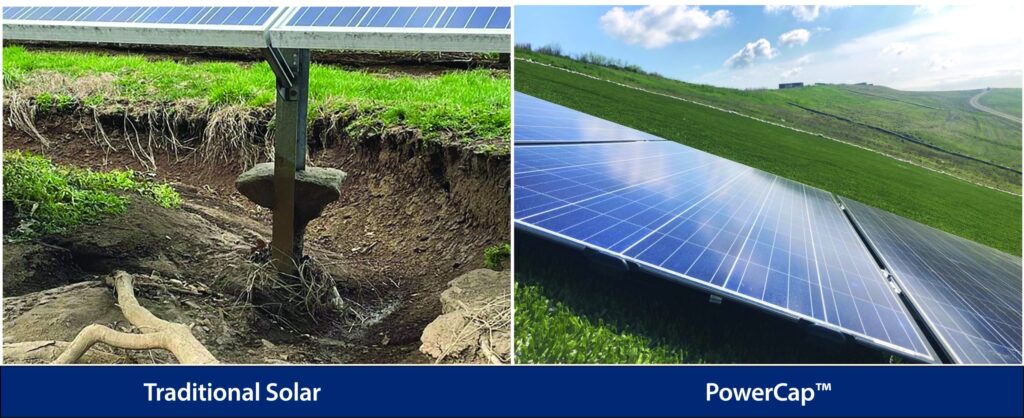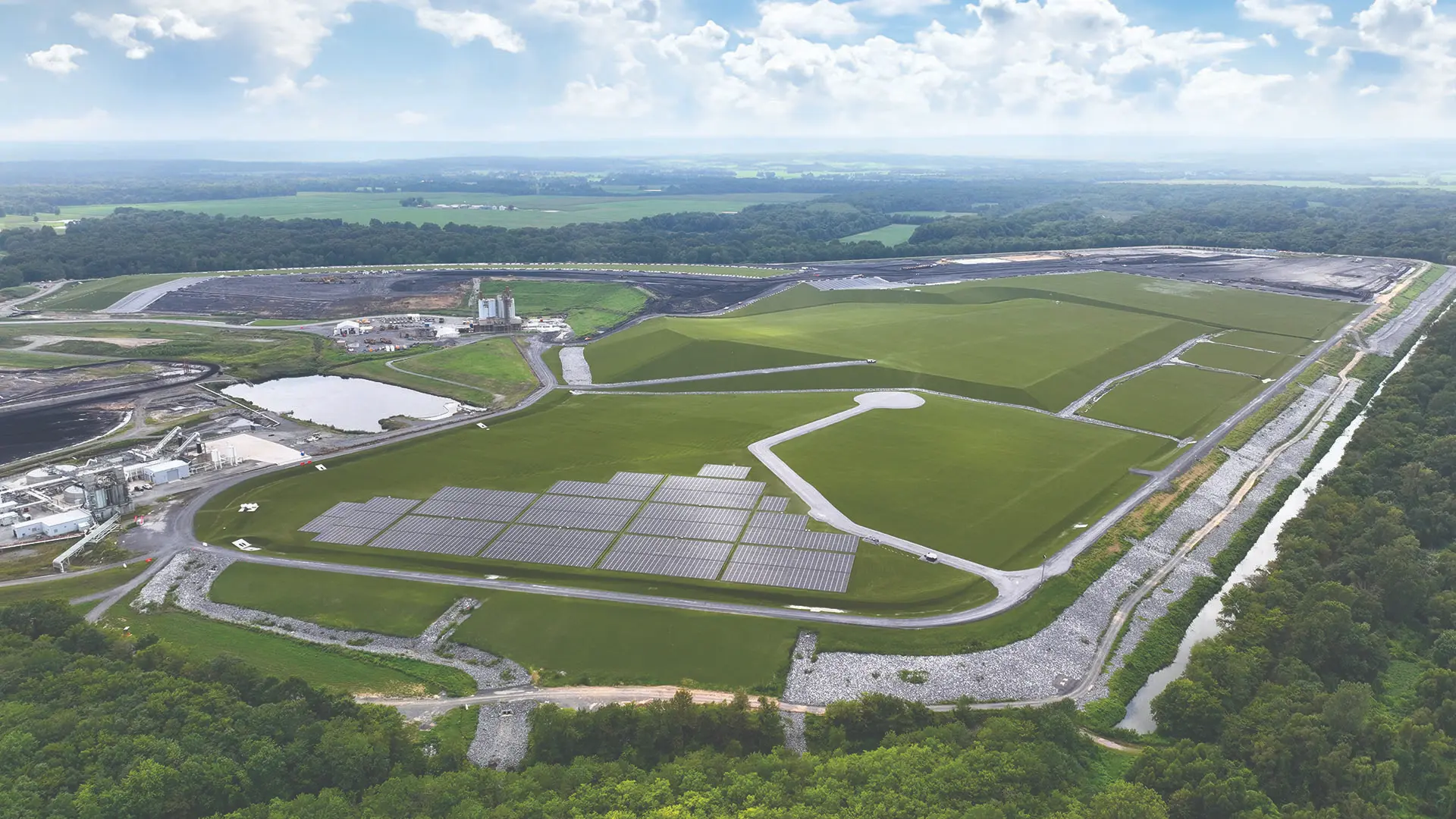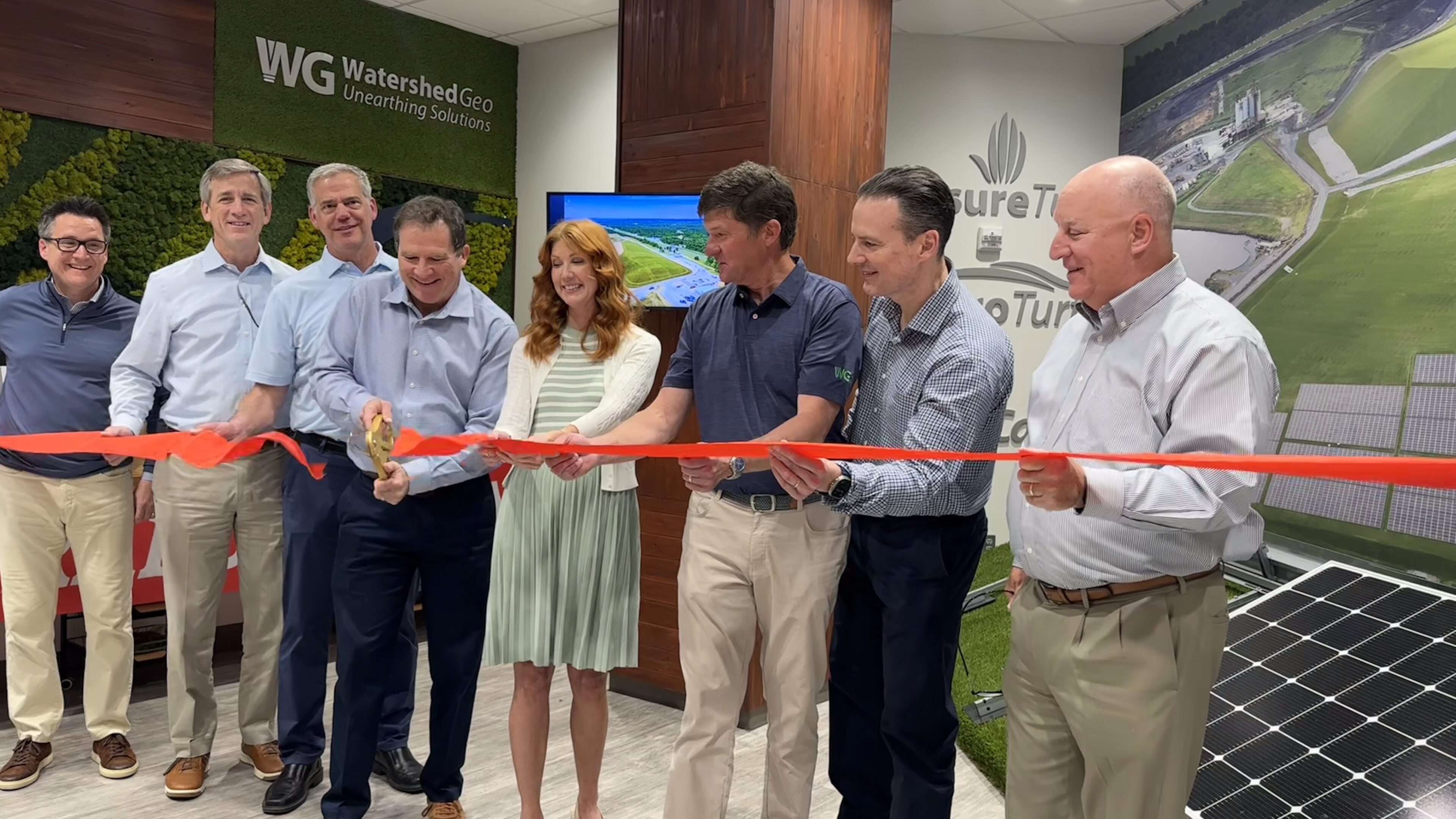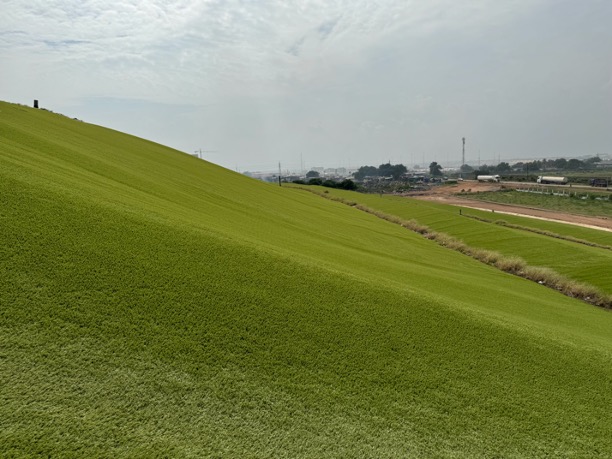Watershed Geo technologies provide a sustainable approach to preventing the common issue of erosion with traditional solar farms and providing cleaner water runoff for reduced water pollution.
When building solar farms, it is not only important to construct the site to manage surface water to prevent erosion, but also to safeguard that nothing detrimental comes off the surface, enters the runoff water and is carried off the site. Our two-component system consisting of a ClosureTurf® foundation and PowerCap™ solar system keeps everything in place, as designed.
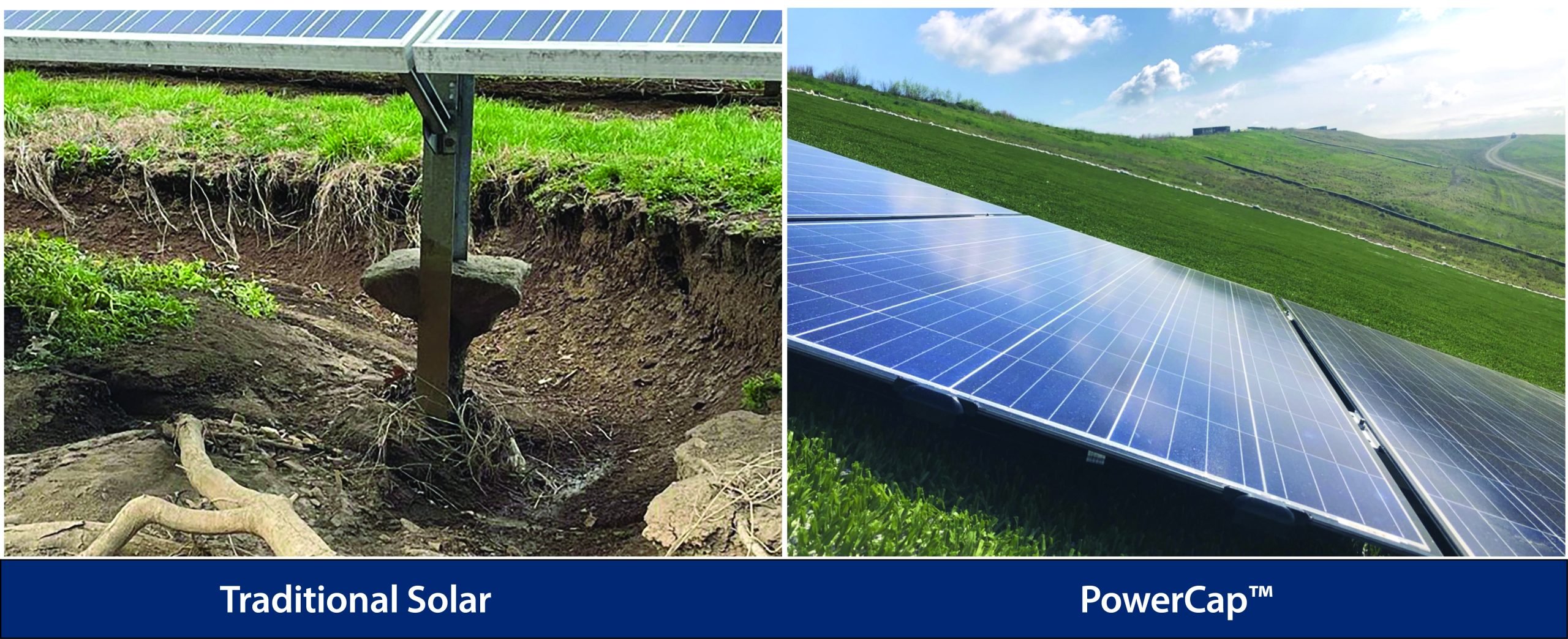
In traditional solar farm installations, the top vegetated layer is disturbed when racking and ballast are added. After this layer is disturbed, the solar developer needs to re-establish vegetation. As grass is being established, rainwater coming off the solar panels tends to wash out the vegetation and cause rutting of the soil. In many cases, deep ruts develop inhibiting movement of equipment between the solar array rows. Furthermore, overgrowth of grass and weeds typically needs to be cut by hand or shading will affect solar panel output. Often, maintenance with herbicides and pesticides becomes necessary and, based on the amount of chemicals used, hiring a licensed contractor is most likely necessary. Rainstorms will ultimately carry off eroded sediment and dissolved materials from fertilizers and chemical components that can pollute adjacent waterways and sources.
Because the vegetated layer and exposed topsoil are eliminated with the PowerCap system, erosion control is not required around the panels, and water quality can be a non-issue. The PowerCap system results in very low storm water runoff turbidity and provides water quality improvement across the spectrum. It provides repeatable water quality results for every storm event so that no matter where or when stormwater flows off site, you can be rest assured it’s clean.
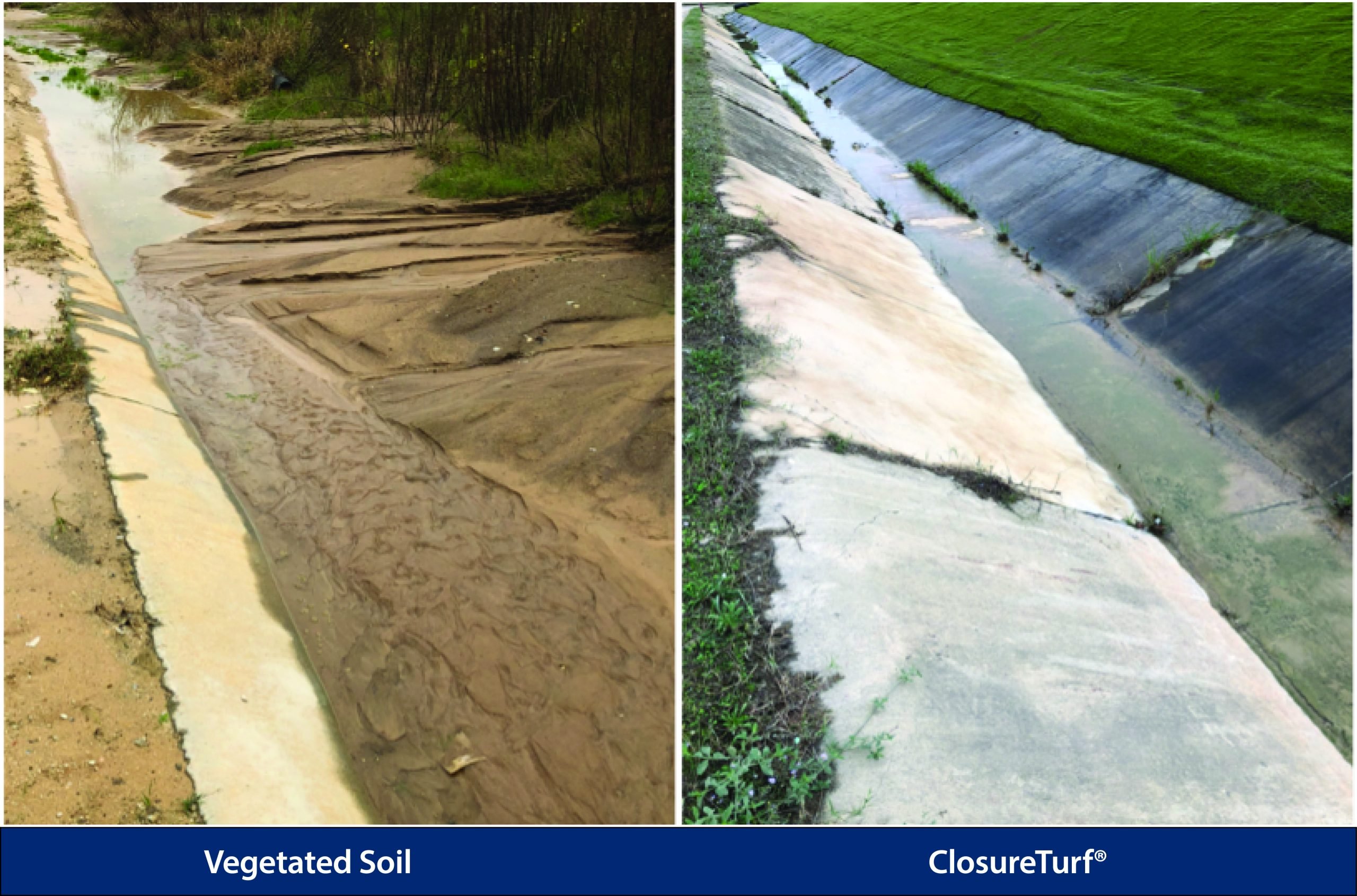
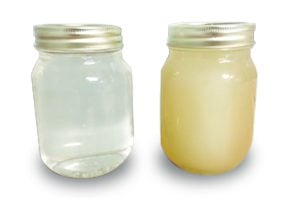
A third party analysis was performed that compared turbidity on a closed landfill cell of ClosureTurf versus a cell with a traditional soil cover cap at the same landfill. The study was done at a site having a history of NTU exceedance due to the very fine sediment soils that are common to the region. Data samples collected showed ClosureTurf at 11 NTU’s and the soil cap at 371 NTU’s (shown in image on right). After years of attempting a wide variety of erosion control methods, the landfill owner was finally able to get well below the minimum turbidity values required by the regulations.

